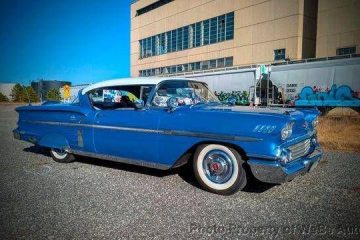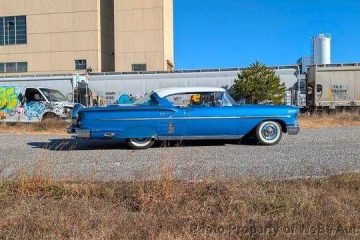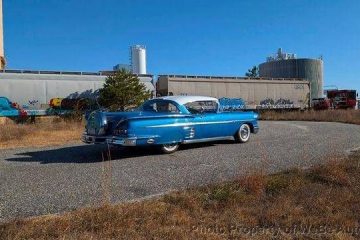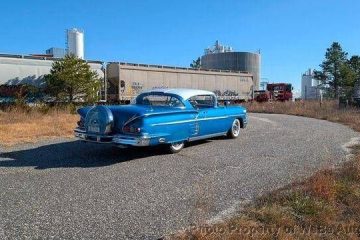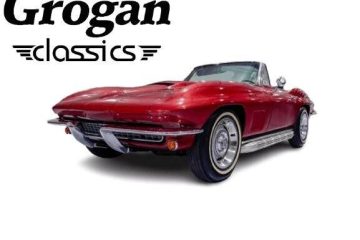1948 Maserati A6gcs Red Monofaro Re-Creation
Description
1948 Maserati A6GCS Monofaro Re-Creation
Quick Facts:
- Make: Maserati – Re-creation
- Model: A6
- Engine size: 4.0 inline 6
- Model Year: 1947
- Sub type: Open/race
- Color: Red
- Mileage: TMU
- Registration: USA
This Maserati A6GCS Monofaro recreation is a masterfully and accurately crafted tribute to the legendary car once driven by racing icon Juan Manuel Fangio. While honoring the classic design, this recreation features modern performance upgrades, including a tubular chassis, a fully built engine, coilovers, disc brakes, and removable fenders. Numerous custom aluminum components—such as the fuel tank, flat floors, interior details, hood, trunk, pedals, grille, and steering wheel—add to its unique character. With over 300 horsepower and weighing less than 750 kg, this vehicle offers the thrilling experience of a contemporary race car with the timeless elegance of a vintage classic.
Recreation Description:
This journey began with the complete blueprints of the original Maserati A6GCS Monofaro. We meticulously adapted the chassis and body to accommodate a larger engine while preserving the essence of the original design. Top-tier coachbuilders crafted custom aluminum parts, ensuring that every detail reflects the quality and craftsmanship of the original Maserati. The end result is a car that speaks volumes about the builders dedication to authenticity and performance.
Competition History:
This Maserati recreation has competed in several endurance races in Argentina and has been a proud participant in prestigious classic events, including multiple appearances at Autoclásica.
The 1948 Maserati A6GCS Monofaro is now available for sale exclusively by [Contact Dealer] (the vintage and exotic vehicle marketing division of Brand Auto Group, LLC, a licensed Georgia auto dealer) Vehicle will be sold with Georgia registration in our dealership name (transferable) along with bill of sale.
History of the Maserati A6GCS:
The Maserati A6GCS was introduced in 1947 as a race car, designed to participate in various competitions, including the famous Mille Miglia. The “A6” refers to the car’s straight-six engine, “G” stands for Ghisa (cast iron), “C” denotes Corsa (racing), and “S” is for Sport. The A6GCS was a part of the A6 series, which were Maserati’s first road-going vehicles, bridging the gap between pure racing cars and road cars.
Design: The A6GCS is particularly noted for its lightweight and aerodynamic design, crafted by some of Italy’s most prestigious coachbuilders, including Pininfarina, Vignale, and Fantuzzi. The car’s sleek and elegant lines, combined with its racing pedigree, made it an instant classic. Pininfarina’s designs, in particular, are considered some of the most beautiful in automotive history.
Engine and Performance: The car was powered by a 2.0L inline-six engine, which was capable of producing around 120 horsepower. This engine was a development of Maserati’s racing engines from pre-war Grand Prix cars, and it provided the A6GCS with impressive performance for its time. The car was built with competition in mind, featuring a 4-speed manual gearbox and weighing only around 740 kilograms (1,630 lbs), making it agile and quick.
Racing Pedigree:
Mille Miglia: The A6GCS gained much of its fame from its participation in the Mille Miglia, a grueling open-road endurance race held in Italy. It quickly became known for its reliability and speed, earning respectable finishes against some of the best cars of the era.
Targa Florio: The A6GCS also saw success in the Targa Florio, another challenging road race in Sicily. The car’s nimble handling and strong engine made it well-suited to the twisting, narrow roads of the race, further cementing its status as a competitive sports car.
Legacy: The A6GCS not only performed admirably in racing but also set the stage for Maserati’s future sports cars. It was a key model in Maserati’s transition from racing to road cars, influencing the design and engineering of subsequent Maserati models.
Production and Rarity:
Limited Production: Maserati produced only about 60 units of the A6GCS between 1947 and 1953. This limited production run, combined with its racing success, has made the A6GCS one of the most sought-after collector cars in the world. Each car was often customized by its owner or coachbuilder, so no two A6GCS models are exactly alike.
Surviving Examples: Today, surviving examples of the A6GCS are rare and highly prized, with many residing in private collections or museums. When they do come up for sale, they attract significant attention and command high prices due to their rarity, historical significance, and beauty.
Significance in Automotive History:
The Maserati A6GCS is more than just a car; it represents a pivotal moment in Maserati’s history, where the brand’s racing heritage and ambitions to build road cars began to merge. It stands as a testament to the craftsmanship and engineering prowess of post-war Italy and remains a symbol of Maserati’s enduring legacy in the world of motorsport and luxury automobiles.

